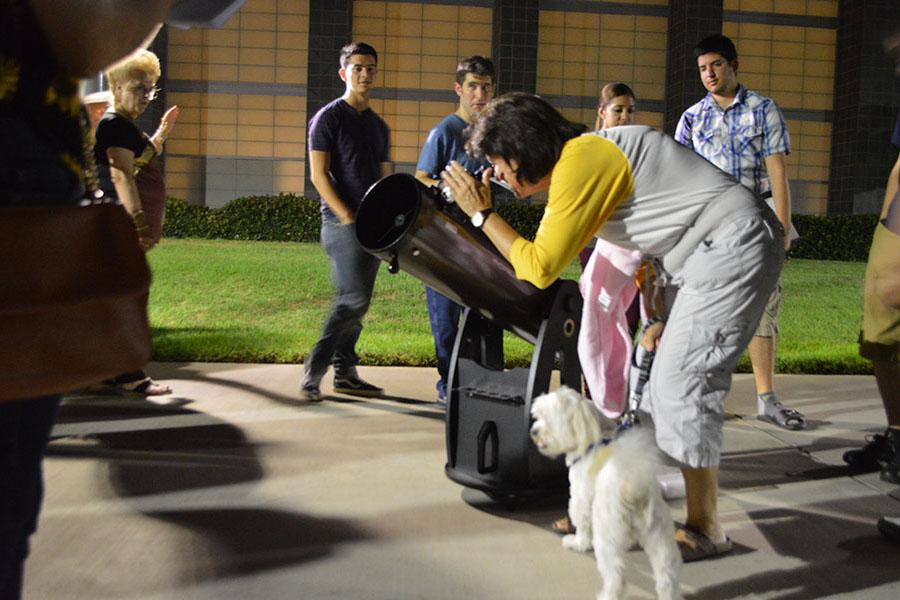The moon glowed bigger and set itself center stage for a night as the Cerritos College community congregated to admire the occurrence.
The Astronomy Club held an event on Sunday, open to students and the general community who were interested in seeing the super moon and eclipse phenomenon.
According to a BBC News article, a super moon occurs when the moon is closest to orbit around Earth, appearing much bigger.
The same eclipse seen from Cerritos College was seen in the rest of the continent, South America and Western Europe.
Connie Boardman, dean of science, engineering and math said, “The Astronomy Club put on the event, and there’s all kinds of club members out here making sure the telescopes are all aligned for the eclipse and we’ve also seen Saturn, so this is a great event for the community.”
Stebbing stated that the next total lunar eclipse would take place in 2033.
The club, which is usually run by Dr. Thad Szabo, aimed the telescopes at Saturn to entertain the attendees due to the cloud blockade of the eclipse.
Olivia Salas, film production major, said, “I’m taking astronomy 105L, which is actually a lab for astronomy, and basically what we’re doing here is looking at the lunar eclipse, which is hiding behind some clouds.”
“The reason why the lunar eclipse is so important is because the earth shadow is on the moon, which kind of makes it invisible,” Salas added.
Szabo offered extra credit to the students who came out to look at the lunar eclipse and super moon that night.
“I think this is a really great thing that Cerritos [College] gives this opportunity for not only students here, but for the community,” Salas expressed.
This phenomenon was last seen in 1982 and will be seen again in 15 years.









